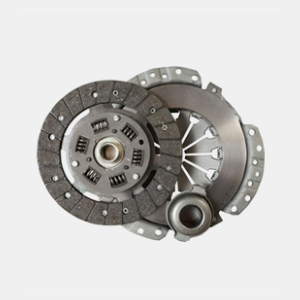-
 Afrikaans
Afrikaans -
 Albanian
Albanian -
 Amharic
Amharic -
 Arabic
Arabic -
 Armenian
Armenian -
 Azerbaijani
Azerbaijani -
 Basque
Basque -
 Belarusian
Belarusian -
 Bengali
Bengali -
 Bosnian
Bosnian -
 Bulgarian
Bulgarian -
 Catalan
Catalan -
 Cebuano
Cebuano -
 China
China -
 Corsican
Corsican -
 Croatian
Croatian -
 Czech
Czech -
 Danish
Danish -
 Dutch
Dutch -
 English
English -
 Esperanto
Esperanto -
 Estonian
Estonian -
 Finnish
Finnish -
 French
French -
 Frisian
Frisian -
 Galician
Galician -
 Georgian
Georgian -
 German
German -
 Greek
Greek -
 Gujarati
Gujarati -
 Haitian Creole
Haitian Creole -
 hausa
hausa -
 hawaiian
hawaiian -
 Hebrew
Hebrew -
 Hindi
Hindi -
 Miao
Miao -
 Hungarian
Hungarian -
 Icelandic
Icelandic -
 igbo
igbo -
 Indonesian
Indonesian -
 irish
irish -
 Italian
Italian -
 Japanese
Japanese -
 Javanese
Javanese -
 Kannada
Kannada -
 kazakh
kazakh -
 Khmer
Khmer -
 Rwandese
Rwandese -
 Korean
Korean -
 Kurdish
Kurdish -
 Kyrgyz
Kyrgyz -
 Lao
Lao -
 Latin
Latin -
 Latvian
Latvian -
 Lithuanian
Lithuanian -
 Luxembourgish
Luxembourgish -
 Macedonian
Macedonian -
 Malgashi
Malgashi -
 Malay
Malay -
 Malayalam
Malayalam -
 Maltese
Maltese -
 Maori
Maori -
 Marathi
Marathi -
 Mongolian
Mongolian -
 Myanmar
Myanmar -
 Nepali
Nepali -
 Norwegian
Norwegian -
 Norwegian
Norwegian -
 Occitan
Occitan -
 Pashto
Pashto -
 Persian
Persian -
 Polish
Polish -
 Portuguese
Portuguese -
 Punjabi
Punjabi -
 Romanian
Romanian -
 Russian
Russian -
 Samoan
Samoan -
 Scottish Gaelic
Scottish Gaelic -
 Serbian
Serbian -
 Sesotho
Sesotho -
 Shona
Shona -
 Sindhi
Sindhi -
 Sinhala
Sinhala -
 Slovak
Slovak -
 Slovenian
Slovenian -
 Somali
Somali -
 Spanish
Spanish -
 Sundanese
Sundanese -
 Swahili
Swahili -
 Swedish
Swedish -
 Tagalog
Tagalog -
 Tajik
Tajik -
 Tamil
Tamil -
 Tatar
Tatar -
 Telugu
Telugu -
 Thai
Thai -
 Turkish
Turkish -
 Turkmen
Turkmen -
 Ukrainian
Ukrainian -
 Urdu
Urdu -
 Uighur
Uighur -
 Uzbek
Uzbek -
 Vietnamese
Vietnamese -
 Welsh
Welsh -
 Bantu
Bantu -
 Yiddish
Yiddish -
 Yoruba
Yoruba -
 Zulu
Zulu
Exploring the Benefits and Uses of Laminated Plastic Bags in Daily Life
Laminated Plastic Bags Versatility and Benefits
In today’s world, where convenience and durability are paramount in packaging solutions, laminated plastic bags have emerged as a popular choice across various industries. These bags, made through the process of laminating multiple layers of plastic films, offer a combination of strength, flexibility, and resistance to environmental factors. Their unique properties and applications make them invaluable in retail, food packaging, and other sectors.
One of the most significant advantages of laminated plastic bags is their exceptional strength. The lamination process involves fusing together several layers of plastic, which enhances the structural integrity of the bags. This feature ensures that the bags can hold heavier items without tearing or breaking, making them ideal for packaging goods that require extra support. Retailers often prefer these bags for carrying groceries, clothing, and other consumer products.
Moreover, laminated plastic bags exhibit excellent moisture resistance. Many laminated films are designed to be waterproof or water-resistant, providing an effective barrier against humidity and liquids. This characteristic is particularly beneficial in the food packaging industry, where fresh produce, snacks, and frozen items need protection from moisture to maintain their quality and extend shelf life. Packaging food in laminated bags not only preserves freshness but also minimizes waste, contributing to more sustainable practices.
Another key benefit of laminated plastic bags is their customizable nature. Manufacturers can easily tailor them according to specific requirements, including size, shape, and design. Businesses can brand their products with colorful prints, logos, and promotional messages, turning simple packaging into effective marketing tools. This versatility allows companies to stand out in a competitive market, enhancing brand recognition and consumer engagement.
laminated plastic bags

Laminated plastic bags are also eco-friendly when compared to traditional plastic bags. Their durability means they can be reused multiple times, reducing the need for single-use packaging. Additionally, many manufacturers are beginning to explore biodegradable and recyclable materials for lamination, further curbing the environmental impact. While the debate over plastic waste persists, innovations in the production and material selection for laminated bags provide a path toward more responsible use of plastics.
Furthermore, laminated plastic bags are easy to seal and store. With various sealing options available, such as zip locks and heat seals, these bags offer convenience for users while ensuring that the contents remain secure. Their lightweight and compressible nature allows for efficient storage, making them a preferred option for both consumers and retailers.
Despite the numerous advantages, it is essential to acknowledge the environmental concerns associated with plastic use. While laminated plastic bags can be more sustainable than single-use options, consumers and businesses must adopt responsible disposal and recycling practices. Awareness around waste management and recycling programs can enhance the lifecycle of these products and mitigate their environmental footprint.
In conclusion, laminated plastic bags represent a versatile and durable packaging solution that meets the demands of various industries. Their strength, moisture resistance, customizability, and eco-friendly potential make them a preferred choice for consumers and businesses alike. As the focus on sustainability continues to grow, the innovation within the laminated plastic bags sector plays a crucial role in balancing convenience with environmental responsibility. As we move forward, it will be vital for manufacturers and consumers to work towards sustainable practices that ensure the longevity and utility of these essential products in our daily lives.
-
Shipping Plastic Bags for Every NeedNewsJul.24,2025
-
Safety Netting: Your Shield in ConstructionNewsJul.24,2025
-
Plastic Mesh Netting for Everyday UseNewsJul.24,2025
-
Nylon Netting for Every UseNewsJul.24,2025
-
Mesh Breeder Box for Fish TanksNewsJul.24,2025
-
Expanded Steel Mesh Offers Durable VersatilityNewsJul.24,2025











